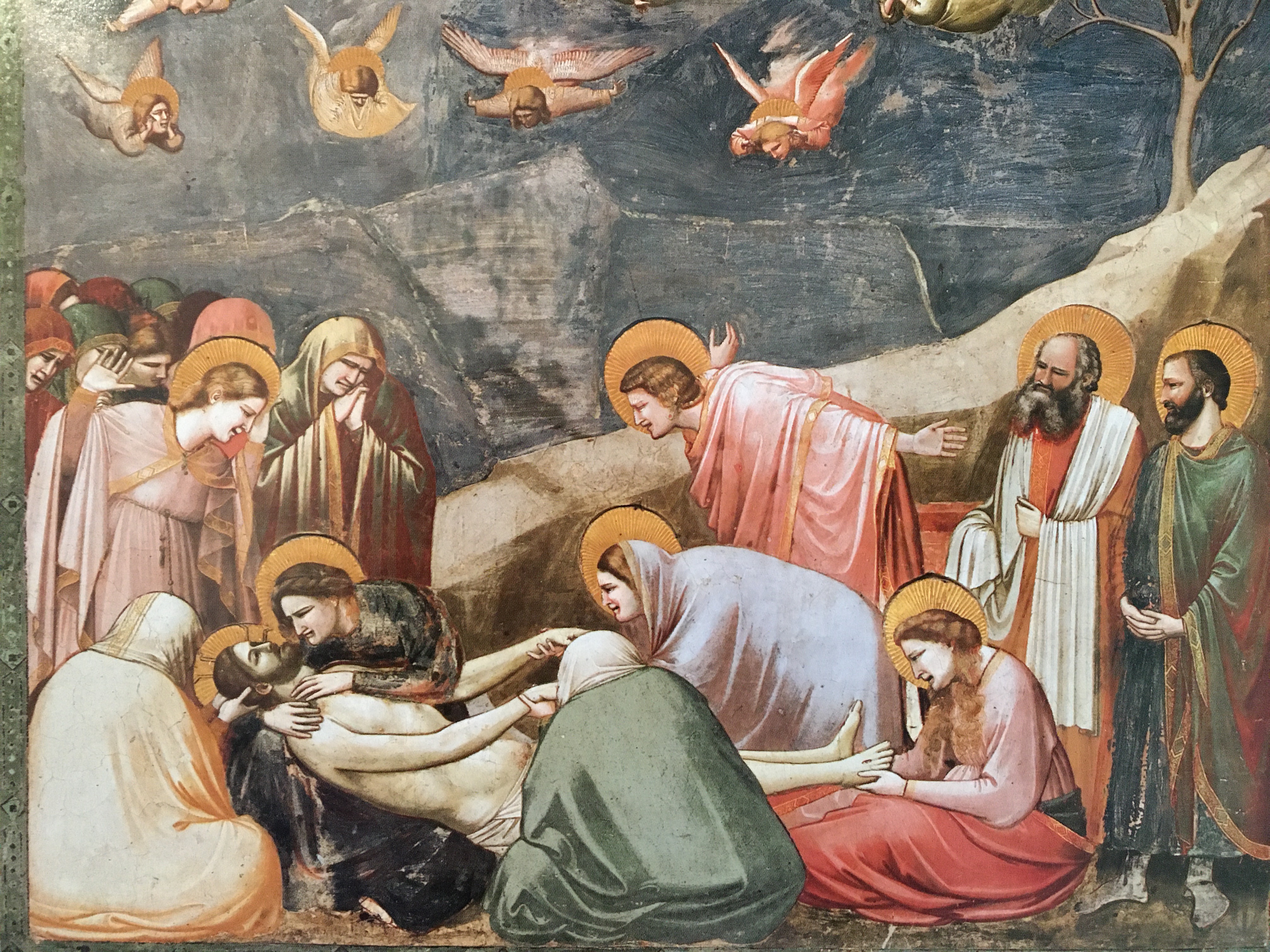Giotto
Giotto's "O"
Magister
Magisterial
Maestro
Magistral
Master
Travel
Chase Manhattan
Florence
Robert Burns
Botafumeiro
Psalm 66:15
"I will offer unto thee burnt sacrifices of fatlings, with the incense of rams; I will offer bullocks with goats. Selah"
"I saw...that the practical teaching of the masters of Art was summed up by the O of Giotto"~~~Ruskin: Queen of the Air, iii.

Giotto - Compianto sul Cristro morto (1304-1306)
Lamentation over Christ
"I saw...that the practical teaching of the masters of Art was summed up by the O of Giotto"~~~Ruskin: Queen of the Air, iii.
"There is a great story about the Renaissance painter Giotto di Bondone (1267-1337) who is said to have won a Vatican contract from Pope Benedictus XII by submitting nothing more than a perfectly executed hand-drawn circle. The circle became famously known as the “O of Giotto”, and remains to this day part of artistic lore. But it is not famous for its realism; realism, as an aesthetic pursuit, was not yet a virtue in Giotto’s time, even if Giotto did much to usher that virtue in. It is famous, rather, for its symbolism: the idea of perfection. The perfect circle, we know, has had a long history of expressing the perfect, the ideal, and thus the divine. Giotto’s O becomes emblematic of a Renaissance obsession with symmetry, with the aesthetics of geometry, with the unity of the whole, and with the spiritual features of the circle. And we can see this worked out in the many Roman arches and halos that Giotto painted for churches and ecclesiastical patrons. But it was more. It also became emblematic of the human aspiration to master an ideally integrated world, one in which the divine imprint on the created order not only could be perceived with the eye and the mind, but also – and this the Renaissance championed most expressly – could be replicated by an aesthetic gesture. This gesture, perfectly rendered, is what so obviously endeared Giotto to the Pope, and allowed Giotto his celebrated career. His O was an immaculate sign of a higher order – indeed, the highest."~~~Posted in Critical Religion, University of Stirling

Robert Burns Cottage.

Giotto, Kiss of Judas
Wonderful Bharatiya woman Hair style on a statue at Sri Bhuvaraha Swamy Temple in Srimushnam, Cuddalore district of Tami Nadu.
Chess: "Giotto" "Giotto's "O" "Magister" "Magisterial" "Maestro" "Magistral" "Master" "Travel" "Chase Manhattan" "Florence" "Robert Burns"
Robert Burns Cottage.
This is the house in Alloway Ayrshire where Robert Burns was born on the 25th of January 1759, he grew up to be one of Scotland’s most beloved and celebrated poets, his works included Auld Lang Syne, Scots Wha Hae, Tam o’ Shanter and To a Mouse.
Poem.
To a Mouse, on Turning Her Up in Her Nest With the Plough,
Wee, sleekit, cowrin, tim'rous beastie,
O, what a pannic's in thy breastie!
Thou need na start awa sae hasty,
Wi' bickering brattle!
I wad be laith to rin an' chase thee,
Wi' murd'ring pattle!
I'm truly sorry man's dominion,
Has broken nature's social union,
An' justifies that ill opinion,
Which makes thee startle
At me, thy poor, earth-born companion,
An' fellow-mortal!.








No comments:
Post a Comment